Lane Fortenberry | December 7, 2023
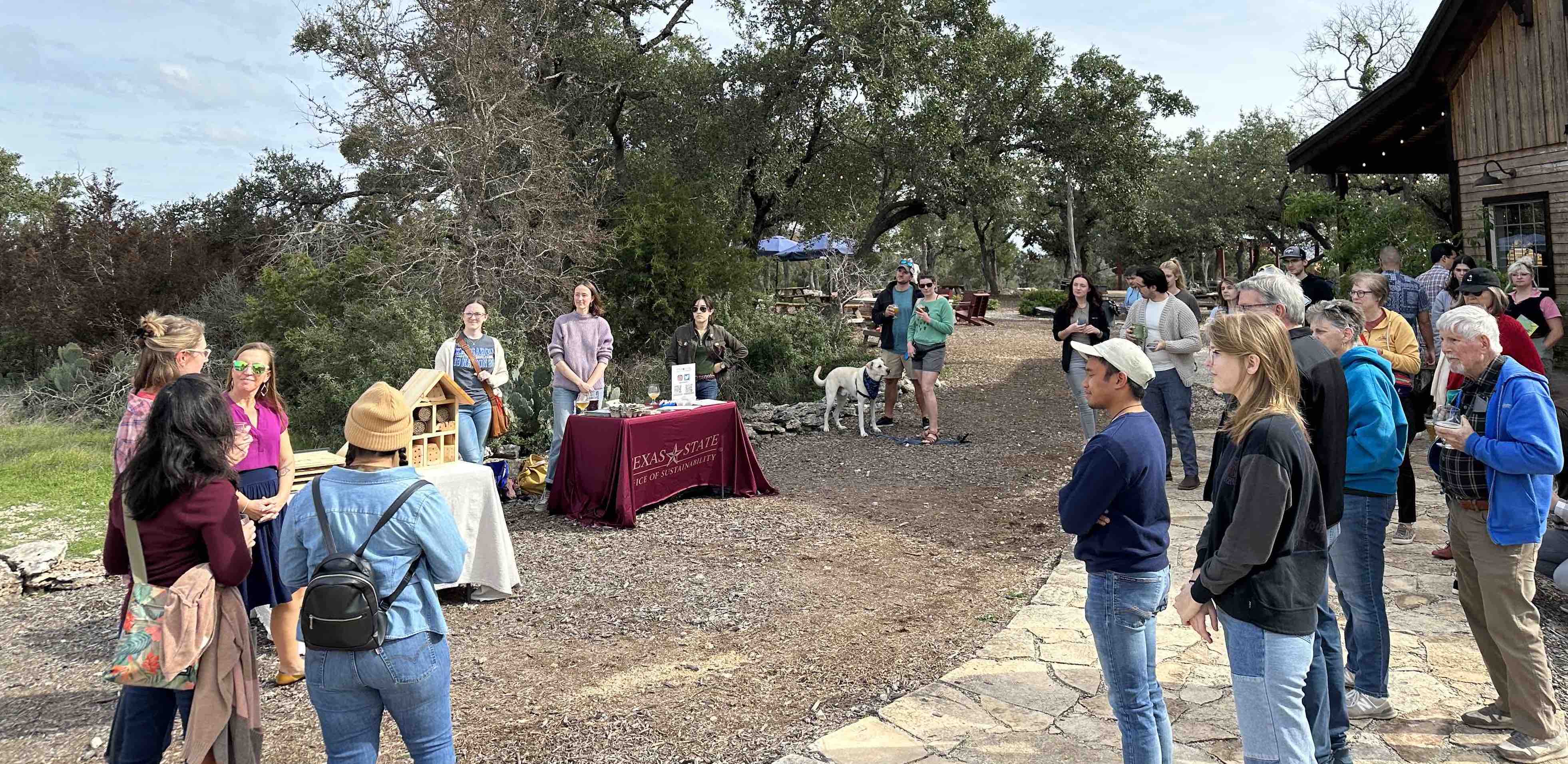
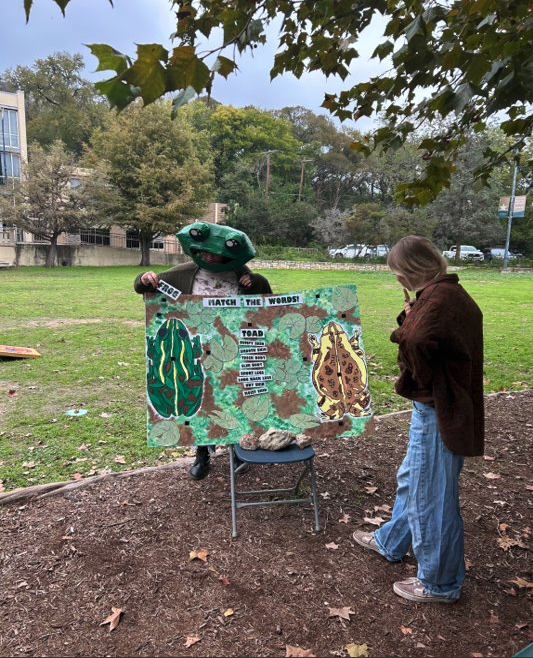
Standard course work is the staple of providing an education to students, but learning and working in the field can amplify what’s taught in the classroom by including real-world experience.
In fall 2023, Texas State University students in GEO 4322/5322 engaged in two community-based, service-learning projects:
- Developing and implementing a series of environmental education workshops with local youth via the San Marcos Explorers program.
- Leading the design, installation, and interpretation of the “Texas Native Wildlife Garden” at Roughhouse Brewing.
The classes featured 25 students with a high level of organization for the two projects. Each project had two project managers and several team leaders and subgroups.
The fall course marked the fourth time the class has been taught by Colleen C. Myles, Ph.D., associate professor in the Department of Geography and Environmental Studies and faculty ombudsperson.
“This is the best part of my job — seeing all your hard work throughout the semester come together,” Myles said. “It's chaotic. It's messy. It's scary. Then you get to see your peers produce these amazing deliverables and outcomes. As an educator, I love service learning so much because it really puts learning into practice. Concepts are going to be solidified in your mind a lot better than if I just said, ‘Read the book, do the test, here's your A, B, or C.’ In the end, it's super exciting and worthwhile.”
The San Marcos Explorers program was headed by Adriana Montoya, a public administration senior and community outreach intern for the Office of Sustainability. Throughout the semester, Daelyn Bassham, a graduate student pursuing a master’s in sustainability studies, worked alongside Adriana as the second project manager for the San Marcos Explorers program.
The idea for the program was to connect learning and education to the student’s environment to develop an affiliation with their community. The model is inspired by youth groups like the Boy Scouts, Girl Scouts, and National Park Service Junior Rangers because of the hands-on nature of the activities they cultivate.
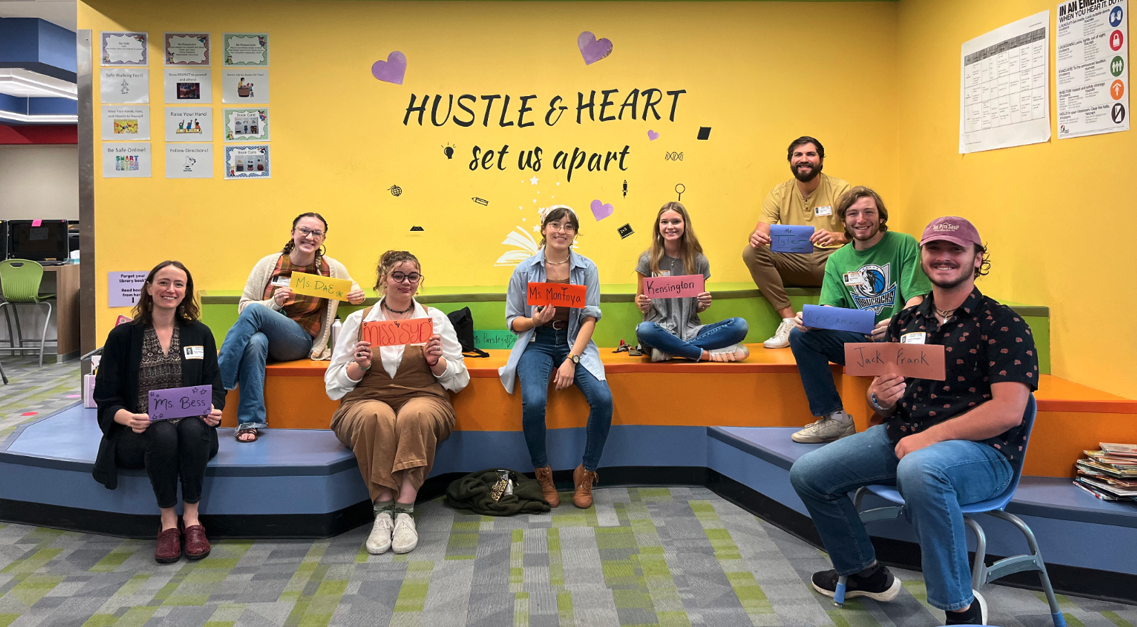
"I really wanted to do something to fix this problem because a lot of the time, students aren’t able to learn about the nature and heritage of their communities because of limitations within public schools,” Montoya said. “We were not learning about the place we grew up in. Crockett Elementary stepped in and were gracious enough to allow me into their library to teach a cohort of 20 fifth graders.”
The San Marcos Explorers program was comprised of three parts. The first included the entire cohort for a shadow session on field guides. The second included group one of the cohort on the topic of conservation mindfulness. Lastly, the third included group two of the cohort on the topic of famous Texas cowboys and cowgirls.
The students in the cohort participated in a variety of activities in the program, including creating their own cattle branding and identifying the frogs and toads of Central Texas during a family day at The Meadows Center.
As part of their course work, TXST students presented their final deliverables, which included a lesson plan, budget of materials and costs, and reflection presentation.
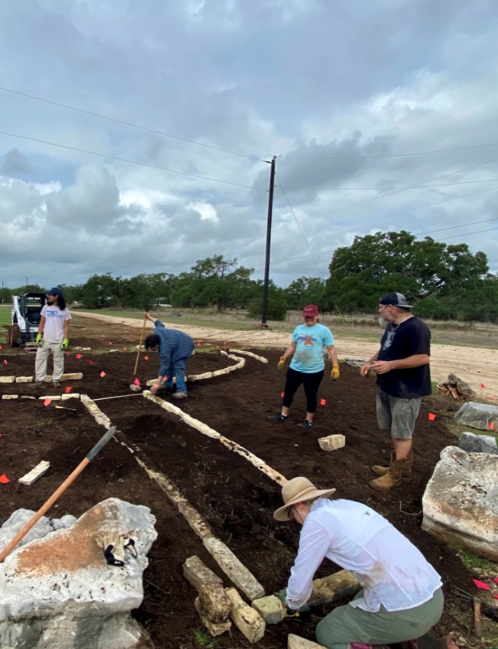
The “Texas Native Wildlife Garden” at Roughhouse Brewing emerged from a shared desire to design and construct a water and wildlife conservation garden that would benefit the community, which is situated on the Edwards Aquifer Recharge Zone.
The project brought together an array of interested parties, including Myles’ interpretive environmental geography students; two TXST graduate students, Amanda Martinez, pursuing a master’s in sustainability studies, and Delorean Wiley, who earned her Ph.D. in geography this semester; and a community-minded private business, namely, Roughhouse Brewing.
The design subgroup posted several iterations of the garden to the GroupMe app, receiving advice on alternative designs to maximize the scope and effectiveness of the space allocated for the garden. The garden could have cost $15,000 if completed by a landscape architect, but the cost was significantly cut through community connections and donations.
Over two workdays, students and community volunteers built the trail and completed planting. The overall area is 1,477 square feet and includes different thematic sections to show the diversity, value, and purpose of the plants.
The environmental interpretive signage subgroup designed informative signage for the garden’s birds, nectar, wildflowers, grasses, pollinators, and monarchs sections. They also created a sign to show the ecological connections between water, plants, and wildlife, and why Roughhouse Brewing wanted to partner with TXST to create the garden.
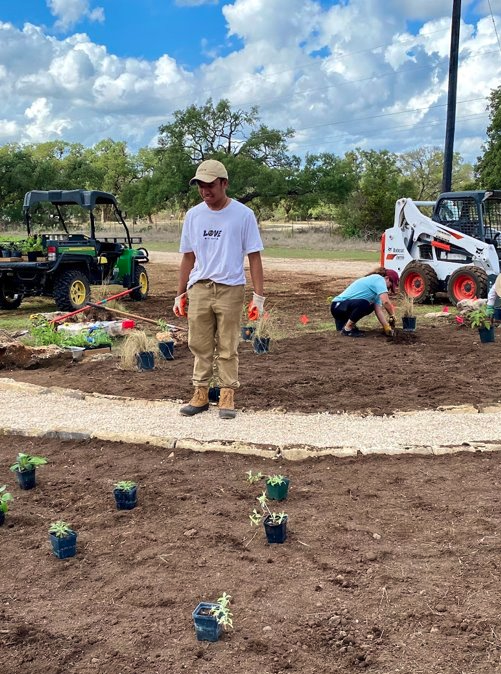
The social media subgroup created posts for Roughhouse Brewing’s consideration to promote visits to the garden, reasons behind TXST partnering with the brewery, the importance of the project, and how viewers can create something similar in their own yard.
“The whole point of this was that we're a part of this system, too,” said Dakota McCallister, a geography resource and environmental studies junior. “We need water, and we need pollinators to create food, and we need pollinators to pollinate these plants. And without these systems, we don't have beer, and we don't have Roughhouse. We need to be doing our best to educate people through community outreach and community connection.”
To see the “Texas Native Wildlife Garden,” visit Roughhouse Brewing at 680 Oakwood Loop, San Marcos, TX.
For more information about the class, visit the Department of Geography and Environmental Studies website.
Share this article
For more information, contact University Communications:Jayme Blaschke, 512-245-2555 Sandy Pantlik, 512-245-2922 |
